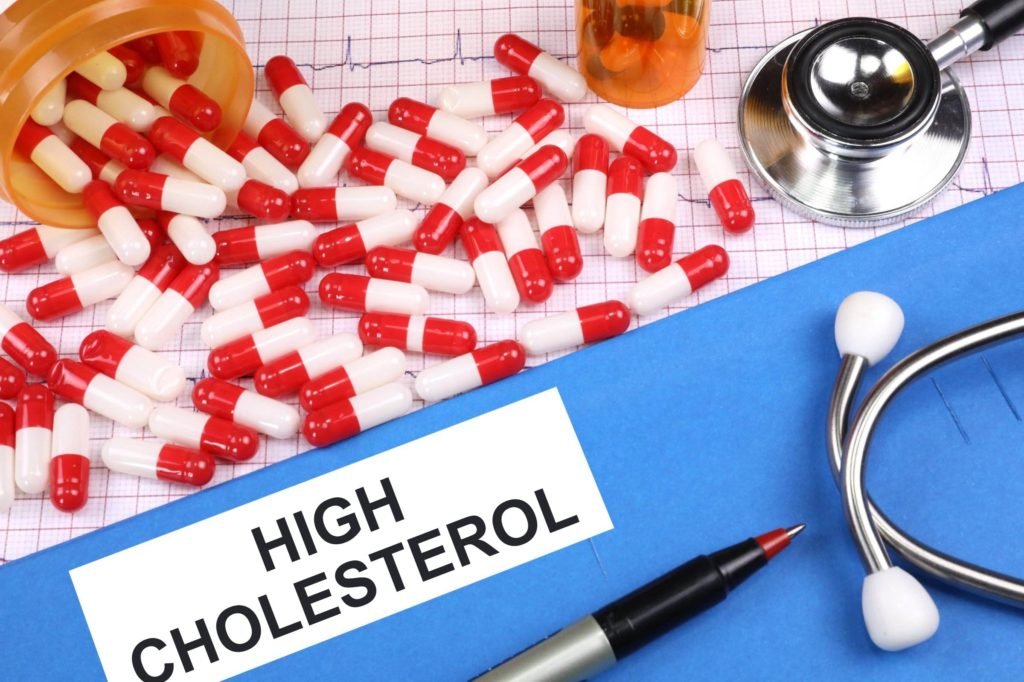You’re presumably reading this because you’re concerned about your health and the role cholesterol can play. That is a critical first step.
What exactly is cholesterol? What exactly does it do?
Cholesterol is a fatty substance with a waxy consistency. It isn’t necessarily “bad.” It is required by your body for the formation of cells, as well as the production of vitamins and other hormones. However, too much cholesterol might be harmful.
To function properly, your body requires cholesterol. However, if you have high cholesterol in your blood, it might adhere to the walls of your arteries, narrowing or blocking them. You’re more likely to develop coronary artery disease and other heart problems as a result of this.
Cholesterol is carried through the bloodstream via lipoproteins, which are proteins. LDL cholesterol, for example, is sometimes referred to as “bad” cholesterol. A high LDL level causes cholesterol to build up in your arteries. HDL cholesterol is a form of cholesterol that is commonly referred to as the “good” cholesterol. It transports cholesterol from your body’s other organs back to your liver. The cholesterol is then removed from your body by your liver.
Your cholesterol and other risk factors are heavily influenced by your diet.

Also Read: Top nutrient dense foods on earth
Can high cholesterol cause dizziness
No, is the short answer.
Generally, high cholesterol does not express itself externally in the form of dizziness or other severe symptoms.
One of the problems with high cholesterol is this. Despite the fact that high cholesterol has substantial long-term health consequences, as well as major and potentially life-threatening issues such as heart disease and strokes, there is no true way to know if you have it unless you undergo a blood test.
Here are 10 good cholesterol foods to lower your cholesterol and improve other heart disease risk factors.
1. Legumes
Beans, peas, and lentils are among the legumes, sometimes known as pulses, a group of plant foods.
Fiber, minerals, and protein are abundant in legumes. Legumes can help lower your risk of heart disease by replacing refined grains and processed meats in your diet.
When compared to not eating legumes, a review of 26 randomized controlled studies found that consuming 1/2 cup (100 grams) of legumes per day lowers “bad” LDL cholesterol by an average of 6.6 mg/dl.
Other research has linked pulses to weight loss, even in non-calorie-restricted diets.
2. Oats
Oats is one of the best breakfast foods to lower cholesterol. Breakfast with a bowl of oatmeal or cold oat-based cereal like Cheerios is a simple first step in lowering cholesterol. It contains 1–2 grams of soluble fiber. For an extra half-gram, add a banana or some strawberries. Current dietary recommendations call for 20 to 35 grams of fiber per day, with at least 5 to 10 grams of soluble fiber. (The average American receives roughly half of this.)
3. Fish
Long-chain omega-3 fatty acids are abundant in fatty fish like salmon and mackerel.
Omega-3 fatty acids improve heart health by raising “good” HDL cholesterol while also reducing inflammation and stroke risk.
Adults who ate the most non-fried fish were the least likely to develop metabolic syndrome, a cluster of symptoms that includes high blood pressure and low “good” HDL values, according to a big 25-year study.
Another major trial found that eating tuna or other baked or broiled fish at least once a week reduced the incidence of stroke by 27%.
Keep in mind that boiling or stewing fish is the healthiest way to prepare it. Fried fish, in fact, has been linked to an increased risk of heart disease and stroke.
4. Okra

Okra, often known as lady’s fingers, is a warm-season vegetable grown all over the world.
Mucilage, a gel contained in okra, has been discovered to help decrease cholesterol by binding to it during digestion. This aids in the removal of cholesterol from the body through the bowels.
5. Avocados
Avocados are high in nutrients that are good for your heart. According to a 2015 study, eating one avocado per day as part of a cholesterol-reducing, moderate-fat diet can reduce the risk of cardiovascular disease by lowering LDL cholesterol without lowering HDL cholesterol.
Avocado offers 14.7 g of monounsaturated fats per cup (150 g), which can lower LDL cholesterol levels and lessen the risk of heart disease and stroke.
6. Nuts
Nuts are high in unsaturated fats, which can help lower LDL cholesterol levels, particularly when saturated fats are replaced in the diet.
Nuts are also high in fiber, which prevents cholesterol from being absorbed and encourages its elimination.
All nuts, including the following, are good for a heart-healthy, cholesterol-lowering diet:
- Cashew
- Almonds
- Walnuts
- Pistachios
- Hazel Nuts
- Brazil Nuts
7. Garlic
Garlic has been used as a active cooking ingredient and as a medicine for centuries.
It contains a number of effective plant compounds, including allicin, which is the principal active ingredient.
Garlic has been shown in studies to lower blood pressure in persons with high blood pressure and to help lower total and “bad” LDL cholesterol, albeit the latter effect is less potent.
Many studies use aged supplements, which are thought to be more effective than other garlic preparations, because relatively high doses of garlic are required to provide this heart-protective effect.
8. Dark Leafy Greens
While all veggies are helpful to your heart, dark leafy greens are especially so.
Lutein and other carotenoids found in dark leafy greens like kale and spinach have been linked to a lower risk of heart disease.
Carotenoids are antioxidants that help to eliminate damaging free radicals that can cause clogged arteries.
By attaching to bile acids and causing your body to expel more cholesterol, dark leafy greens may also help decrease cholesterol levels.
According to one study, lutein helps prevent cholesterol from adhering to arterial walls by lowering levels of oxidized “bad” LDL cholesterol.
9. Green Tea
Certain teas, such as green tea, contain antioxidants called catechins, which can be very beneficial to one’s health.
Green tea drinking significantly reduced total and LDL cholesterol levels without lowering HDL cholesterol levels, according to a study published in 2020. Further research is needed to corroborate the findings, according to the experts.
10. Virgin Olive Oil
Extra virgin olive oil is a staple of the Mediterranean diet’s heart-healthy Mediterranean diet. Cooking oil is one of its many applications.
Substituting monounsaturated fat, found in extra virgin olive oil, for saturated fat, present in butter, may help lower LDL levels.
Furthermore, extra virgin olive oil contains antioxidant and anti-inflammatory qualities that might improve cardiovascular and overall health.
High Cholesterol Foods To Avoid
Limit your intake of the following foods, which are high in saturated and trans fats, to lower your “bad” cholesterol levels:
- Red meat
- Food made with palm oil
- Pastries
- Chips made of potatoes
- Fried foods
- Dairy products that are high in fat
- Egg Yolk
Is shrimp high in cholesterol
Shrimp have a high cholesterol content. If you consume 12 large shrimp, you’ll get roughly 130 milligrams. Shrimp, on the other hand, are low in fat and high in B vitamins, protein, and the minerals selenium and zinc. Consult your doctor, but you should be able to eat them once or twice a week. Shrimp are also high in unsaturated fatty acids, which help to boost HDL levels.

Takeaway
It’s critical to keep LDL cholesterol levels low since it lowers the risk of heart disease and stroke.
This can be accomplished by eating a balanced diet rich in high-fiber fruits and vegetables, whole grains, nuts, fatty salmon, unprocessed soy, and dark chocolate on occasion.
Limiting saturated fat intake is also crucial because it raises LDL cholesterol levels and increases the risk of heart disease, stroke, and obesity.





